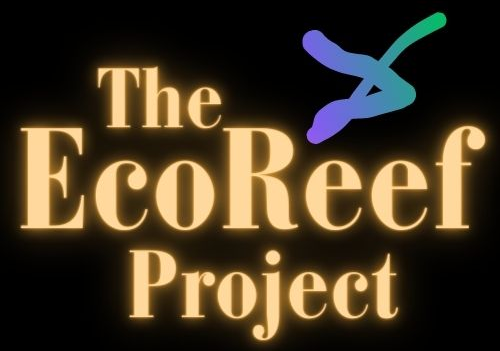Shark Nets Vs Powerful Voice Miss Earth 2024 Jessica Lane

Advocacy for Shark Net Removal
Firstly – Go Jessica Lane, who has been crowned Miss Earth 2024 & she is standing up for a cause that matters.
Jessica Lane’s Advocacy
Jessica Lane, crowned Miss Earth 2024, has become a prominent voice in the campaign for shark net removal. With her background in journalism and her deep-rooted passion for environmental conservation, Jessica has leveraged her platform to raise awareness about the detrimental effects of shark nets. Her advocacy is driven by a genuine commitment to protecting marine life and promoting more sustainable practices.
Jessica believes in the power of education and community engagement to drive change. She emphasizes the importance of adopting modern technologies such as shark-spotting drones, drum lines, and magnetic barriers, which offer effective and humane alternatives to traditional shark nets. Her efforts have garnered significant support from conservation groups, the public, and policymakers, amplifying calls for a review and overhaul of current shark management practices.
Jessica Lane’s importance to conservation and shark net removals lies in her ability to combine passion, knowledge, and influence to drive meaningful change. Her advocacy work serves as a beacon of hope for marine conservation, inspiring others to join the fight for a healthier, more sustainable world.
Disclaimer
The content of this article is for informational purposes only. We have no direct affiliation, association, or connection with Jessica Lane, Miss Earth 2024. All information provided is based on publicly available sources and is intended to highlight her campaign for shark net removal and environmental advocacy.

Australia & Shark Nets
Shark nets have long been used along Australia’s east coast and harbours as a method of shark control to protect swimmers. However, these nets have become a significant point of contention due to their environmental impact and inefficacy. The call for their removal is growing stronger, driven by conservationists and scientists who advocate for more humane and effective alternatives.
The Political Red Herring of Safety
One of the main arguments used to justify the continued use of shark nets is the notion that they keep people safe. This argument, however, can be seen as a political red herring. While the intention behind shark nets is to protect swimmers, the reality is that they do not provide a complete barrier against sharks. Sharks can swim over, under, or around the nets, meaning that the perceived safety is often illusory. The emphasis on shark nets as a safety measure can divert attention from more effective and humane alternatives that could better protect both humans and marine life.

Environmental Damage vs. Swimmer Protection
The environmental damage caused by shark nets far outweighs their benefits in protecting swimmers. The indiscriminate capture and death of various marine species, including endangered ones, disrupts marine ecosystems and threatens biodiversity. The ecological impact of these nets is profound, leading to imbalances that can have long-term consequences for ocean health. In contrast, the actual protection provided to swimmers is limited, as shark nets do not create a foolproof barrier. The focus should shift towards adopting technologies that minimize environmental harm while ensuring swimmer safety.
Shark Attacks Fear vs. Reality
The fear of shark attacks is often amplified by media coverage and sensationalism, leading to a perception that shark attacks are a major threat.
However, the reality is that shark attacks are extremely rare. Statistically, the likelihood of being attacked by a shark is far lower than many other risks people face daily. The fear campaign surrounding shark attacks can be seen as disproportionate to the actual risk.
By focusing on education and awareness, we can help dispel myths and reduce irrational fears, promoting a more balanced understanding of sharks and their role in marine ecosystems. Millions of dollars for just polyitical gain and damage to an environment to make them people feel like politicians are doing something.

The Environmental Impact of Shark Nets
Shark nets are designed to catch and kill specific shark species that are considered dangerous to humans. However, these nets do not discriminate, resulting in the entanglement and death of various marine species, including dolphins, turtles, rays, and even whales. Data from the Queensland Department of Agriculture and Fisheries shows that the number of marine life caught in the nets has more than doubled in recent years. This year alone, 1,422 marine animals were caught in the nets, highlighting the significant toll on marine biodiversity.
The indiscriminate capture of non-target species disrupts marine ecosystems and threatens the survival of vulnerable species. Sharks are important and more important than lots think. These animals play a major and interesting role in maintaining the health of marine ecosystems. these animals are known as apex predators but this does not just mean they eat.. Their removal can lead to imbalances that affect the entire ocean food chain, demonstrating the far-reaching consequences of using shark nets.
Ineffectiveness in Preventing Shark Attacks
Despite their long history of use, shark nets are not foolproof in preventing shark attacks. Sharks can swim over, under, or around the nets, which do not create a complete barrier. As a result, they provide a false sense of security for swimmers and beachgoers. Incidents of shark attacks still occur, questioning the efficacy of shark nets as a protective measure.

Advancements in Shark Detection Technology
The development of new technologies has provided more efficient and humane alternatives to shark nets. Shark-spotting drones, for example, offer real-time surveillance of beach areas, allowing lifeguards to detect and respond to shark sightings promptly. These drones can alert lifeguards and beachgoers if a shark is spotted, allowing for timely evacuations.
Drum lines and smart buoys equipped with acoustic technology can target specific shark species without harming other marine life. Drum lines use baited hooks to capture sharks, and smart buoys send alerts when a shark is caught, enabling quick release of non-target species. Circle hooks, designed to reduce bycatch, offer a more humane solution by minimizing injury to non-target species. These innovations reflect significant advancements in shark management that were not available when shark nets were first implemented.
Environmental and Ethical Concerns
The high mortality rate of marine animals entangled in shark nets raises significant ethical and environmental concerns. As society becomes more aware of the importance of biodiversity and the need to protect vulnerable species, the use of shark nets is increasingly viewed as an irresponsible and inhumane practice. Modern conservation efforts prioritize methods that minimize harm to wildlife and promote coexistence between humans and marine life.

Global Examples of Successful Alternatives
Various countries around the world have successfully implemented alternative shark management strategies that do not rely on nets. For instance, South Africa uses a combination of shark-spotting programs and eco-friendly barriers to protect beachgoers while preserving marine biodiversity. In Western Australia, shark deterrent devices and community education programs have been effective in reducing shark incidents. These global examples demonstrate that there are viable and more sustainable alternatives to shark nets.
Technological Obsolescence
Shark nets were introduced in the early 20th century, a time when technology and understanding of marine biology were far less advanced. With the rapid pace of technological innovation, relying on century-old methods is neither practical nor effective. Embracing modern technology allows for more precise, efficient, and humane shark management solutions.

Economic and Social Impact
The use of outdated shark nets or shark lines can also have economic and social repercussions. The negative publicity surrounding the harm caused to marine life can impact tourism and the reputation of beach destinations. In contrast, the adoption of modern shark management technologies can enhance safety while promoting a positive image of responsible and sustainable practices.
A Vision for the Future
The campaign for shark net removal is part of a broader vision for marine conservation that emphasizes innovation, sustainability, and ethical responsibility. By advocating for the use of advanced technologies and more humane methods, conservationists aim to protect both human safety and marine ecosystems. Education and awareness are key components of this vision, as they help foster a greater understanding of the importance of biodiversity and the need for conservation efforts.

Conclusion
Shark nets are increasingly viewed as an outdated and ineffective method of shark control. The indiscriminate harm they cause to marine life, coupled with advancements in technology and growing ethical concerns, highlight the need for more humane and sustainable alternatives. By moving away from shark nets and embracing modern solutions, we can better protect both humans and marine ecosystems, ensuring a healthier future for our oceans.

Join the Discussion
We’d need to hear your thoughts and experiences about shark net removal and marine conservation as this is an important issue. How do you think we can better protect both humans and marine life? Have you been involved in any conservation efforts or encountered the impact of shark nets firsthand?








































